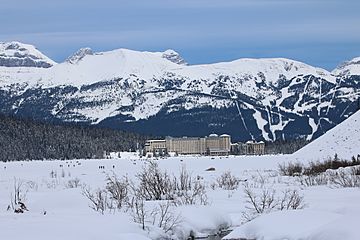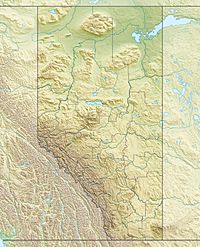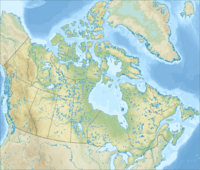Whitehorn Mountain facts for kids
Quick facts for kids Whitehorn Mountain |
|
|---|---|

Whitehorn Mountain seen beyond Chateau Lake Louise
|
|
| Highest point | |
| Elevation | 2,621 m (8,599 ft) |
| Prominence | 167 m (548 ft) |
| Parent peak | Mount Richardson |
| Listing | Mountains of Alberta |
| Geography | |
| Location | Alberta, Canada |
| Parent range | Slate Range Canadian Rockies |
| Topo map | NTS 82N/08 |
| Climbing | |
| First ascent | 1884 A.P. Coleman |
Whitehorn Mountain is a cool peak found in the Slate Range. It's part of the amazing Banff National Park in Alberta, Canada. This mountain stands tall at 2,621 meters (about 8,600 feet) above sea level.
Contents
How Whitehorn Mountain Was Made
Have you ever wondered how huge mountains like Whitehorn are formed? Whitehorn Mountain, just like other mountains in Banff National Park, is made of a type of rock called sedimentary rock.
What is Sedimentary Rock?
Sedimentary rock forms over millions of years from tiny bits of sand, mud, and shells. These pieces settle at the bottom of ancient seas. Over time, they get pressed together and turn into solid rock. For Whitehorn Mountain, this happened between the Precambrian and Jurassic periods.
The Laramide Orogeny
Later, a huge event called the Laramide orogeny happened. This was a time when massive forces deep inside the Earth pushed and folded the land. It caused the sedimentary rock to move upwards and even slide over younger rock layers. This incredible process created the Rocky Mountains, including Whitehorn Mountain, that we see today.
Mountain Weather
Whitehorn Mountain is located in a subarctic climate zone. This means it has very specific weather patterns throughout the year.
Cold Winters
Winters on Whitehorn Mountain are usually very cold and snowy. Temperatures can often drop below -20 °C (which is -4 °F). When the wind blows, it can feel even colder, sometimes below -30 °C (-22 °F). So, if you visit in winter, you need to bundle up!
Mild Summers
In contrast, summers are generally mild. While it's not super hot, the warmer temperatures allow for the snow to melt and for plants to grow. This makes it a great time for hiking and exploring the area around the mountain.



